Zambia’s unsung safari gem: Lower Zambezi
Here’s why this tucked-away national park is one of Africa’s most inspirational safaris
For travellers planning that bucket list safari to Africa, a handful of destinations spring quickly to mind. Perhaps South Africa, where the Kruger National Park and surrounds promise remarkable cat sightings amid lush bushveld. Next comes Tanzania or Kenya, home to the iconic migrations across the Serengeti and Masai Mara. Botswana is up there too, for the annual flooding of the Okavango Delta, which attracts a huge range of wildlife and birdlife.
Zambia? That may come in a distant fifth. And even then, it’s likely to be safari converts intrigued by the famous walking safaris in the South Luangwa National Park.
But now there’s a new kid on the Zambian safari block, an unsung swathe of wilderness that is fast growing a reputation for immersive experiences in some of the most dramatic landscapes Africa has to offer.

Conservation Lower Zambezi getting a bird’s eye view / Image: Francois d'Elbee

That corner is the Lower Zambezi National Park, a 4,092-square-kilometre stretch of wilderness in the southeast of the country. It’s Zambia’s newest park, and until it was declared a national park in 1983, it was the private reserve of the country’s president. The park is also located within a broader conservation region, surrounded almost entirely by game management areas (GMAs), in which communities and wildlife live side-by-side. Across the river, on the Zimbabwean bank, the expanse of Mana Pools National Park creates an even bigger wilderness area, intersected by a long valley running between the two parks.
“The valley is just a natural haven for wildlife,” explains Ian Stevenson, CEO of Conservation Lower Zambezi (CLZ). “The valley floor is relatively narrow on the Zambian side, in parts only four kilometres wide, and so you get this incredible focus of wildlife on the river and in the riverine forest.”

Wildlife protection underway courtesy of Conservation Lower Zambezi / Image: Francois d'Elbee
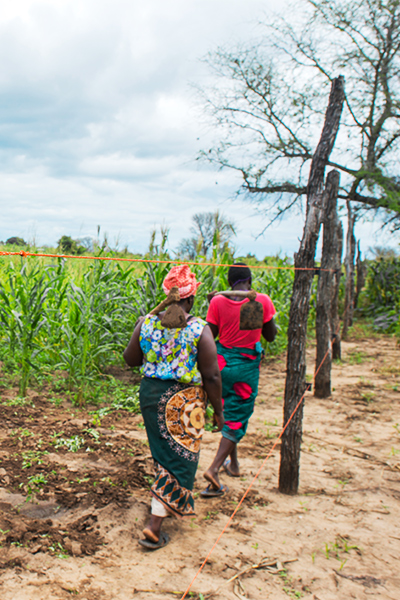
One of Conservation Lower Zambezi’s community projects / Image: Francois d'Elbee
CLZ was founded in 1994 with a focus on species conservation – mostly to protect elephants, and help communities protect their crops from various hungry mammals – but has since widened its scope, expanding its wildlife protection, and providing education and community outreach. It’s a remarkable operation, which runs from operating specialised marine and K9 anti-poaching units across a 20,000-square-kilometre conservation area, to school outreach programs.
These concerted conservation efforts have helped to establish the Lower Zambezi National Park as a bright new frontier in African safari tourism.
“Zambia is certainly a destination that is driven more by specific experiences, [rather] than just ticking off the bucket list item of going on safari,” says Louise Engelbrecht, travel manager at tour operator Timeless Africa. “South Luangwa is famous for its game drives and walks, and Kafue is Zambia’s largest park, but the Lower Zambezi is all about the water. As you fly in over the Zambezi the views are just incredible.”
“The Lower Zambezi is often seen as the hidden gem of Zambia,” adds Johnny Prince, co-founder and CEO of travel tour operator Timbuktu. “As a destination, it’s not as well-known as South Luangwa, but that’s also part of its magic. It’s less developed, it’s less commercialised. A huge draw of the park is the diversity. Not only in terms of landscape, with the Zambezi River, but also a massive diversity in the activities on offer.”
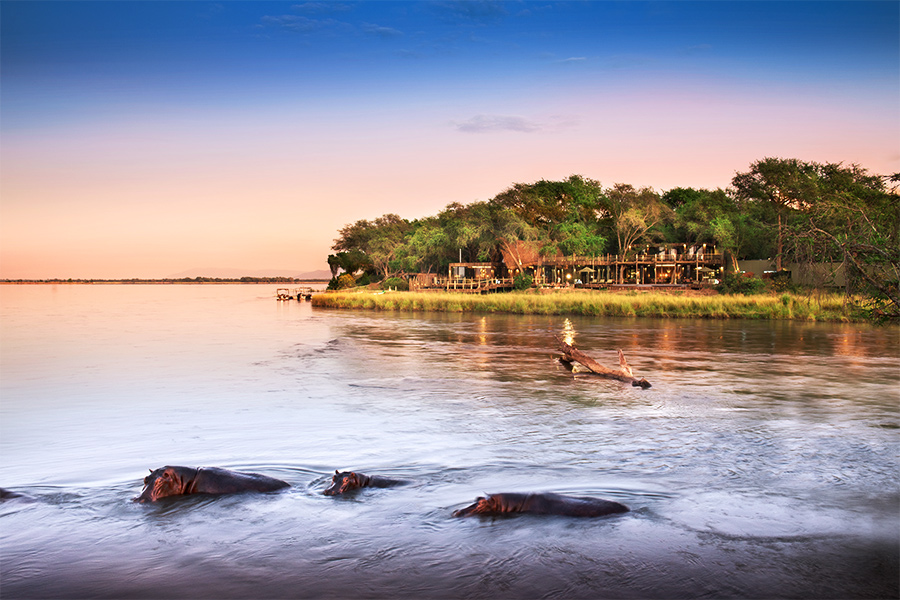
Taking a dip: hippos on a Lolebezi safari / Image: African Bush Camps

That is all thanks to the Zambezi, the fourth longest river in Africa, which marks the southern boundary of the park. River activities range from relaxed sunset cruises to thrilling canoe safaris that offer eye-level encounters with wildlife, which might include any number of bird species, hippos and occasionally even elephants. There’s an element of danger, of course, but the guides at lodges in the park bring years of experience. Most of them grew up in nearby villages, paddling and fishing these waters since childhood.
Fishing has long been a highlight of the Zambezi, one of the few waterways that’s home to healthy populations of the African tigerfish. Sports anglers speak in hushed tones of the creature (hydrocynus vittatu), a fish famous for its relentless fight and its tactic of ‘fin-walking’ in a bid to throw the hook. But the guides here usually come out on top. A few hours on the water and you’re sure to see a tiger safely on board – and safely released: fishing for the hallowed tigerfish is only allowed outside of the breeding season and is strictly catch-and-release.
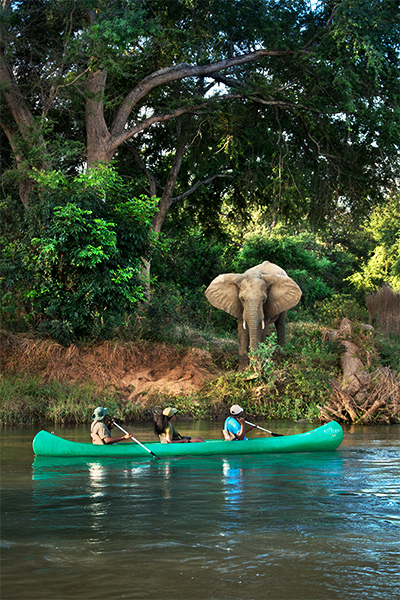
An unexpected bystander casually watching the Lolobezi canoe safari / Image: African Bush Camps
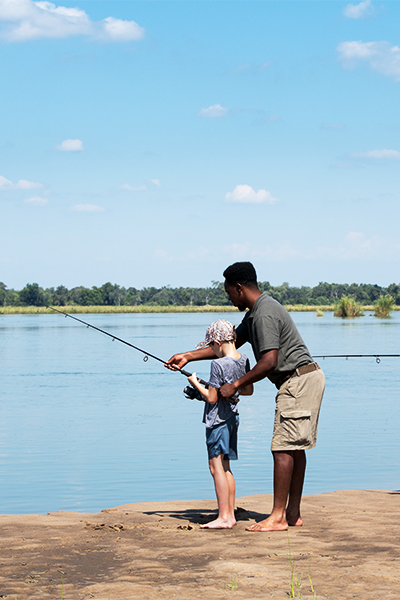
Teach a man to fish... The fishing experience at Lolobezi / Image: African Bush Camps
Even on land, the river defines the wilderness experience. Home to four of Africa’s so-called Big Five (lion, leopard, elephant and buffalo – there are no rhinoceros in the park), the banks of the Lower Zambezi are famous for enigmatic forests of winterthorn, whose pods draw herds of hungry elephant in the winter months.
“The Lower Zambezi is one of Africa’s last elephant strongholds,” adds Stevenson from CLZ. “Our last survey showed the broader ecosystem is home to around 23,000 elephants. And the Zambezi has one of the highest populations of hippos in Africa.”
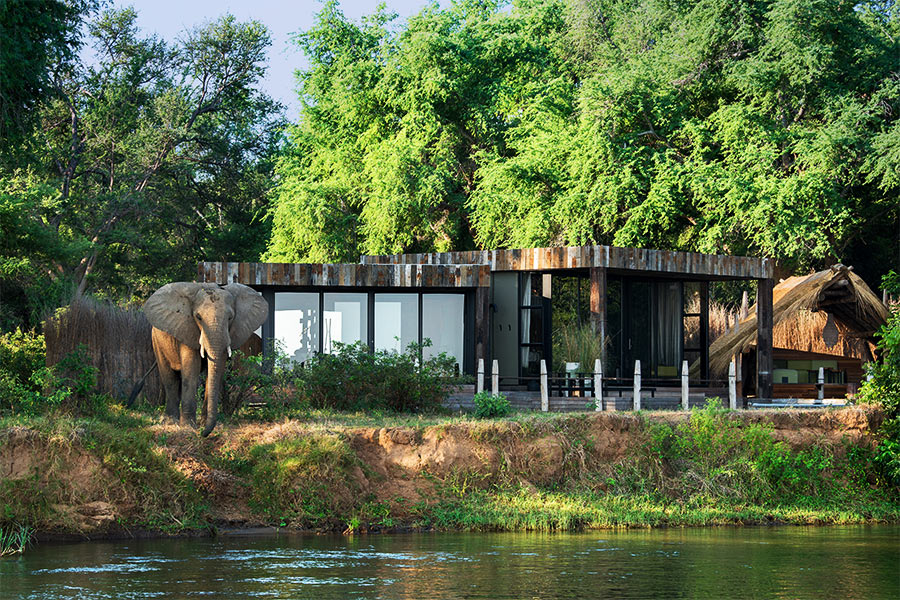
Elephants wander through Lower Zambezi / Image: African Bush Camps

The work of the CLZ is partly funded through tourism, with lodges in the park paying a substantial annual membership fee to ensure tourism has a direct impact on both conservation and community. Many of the lodge guides call those communities home, and bring remarkable knowledge and passion to the game experience.
“I think this is Africa’s greatest wilderness area,” enthuses Patrick Siabunkululu, Head Guide at Lolebezi. This new-build lodge, operated by African Bush Camps, opened in June 2022 and has raised the bar for luxury safaris in the park, with eight private suites strung out along a sweep of private river frontage.
But for Siabunkululu, it’s all about the wildlife. “At Lolebezi we find leopards hunting in the winterthorn forest around the lodge, we have wild dogs in a den nearby. We have even had lions hunting around the spa,” he says with a chuckle.
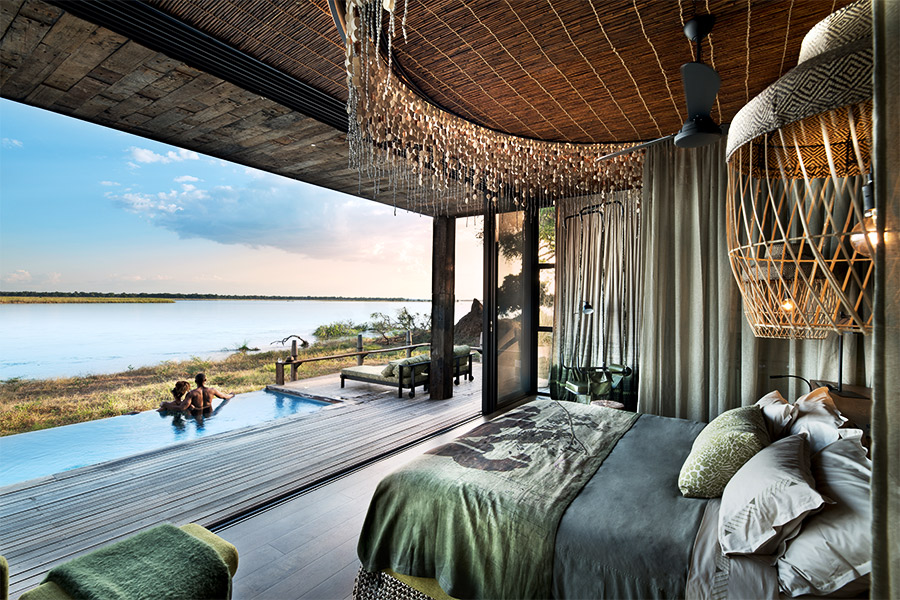
Suite view: luxurious accommodation at Lolebezi /: African Bush Camps

Beyond these acacia forests, wide floodplains connect the river to the escarpment, creating a corridor of level ground and lush vegetation that attracts both antelope and predators in numbers. Twice-daily game drives trundle through this untouched landscape, with bush walks – in the company of an armed national parks guard – offering a more visceral experience of the landscape.
There’s no shortage of activities, but what you want to do should also guide when you plan to visit.
Lower Zambezi is a highly seasonal destination. When the summer rains arrive, the region’s black cotton soil makes many roads impassable, while the riverine flood plains transform into shallow lakes. Some lodges on the fringes of the park have road access, but many close for the season. Others, such as Lolebezi, are open year-round and rely on boats to ferry guests to the lodge, providing an even more scenic journey than usual.
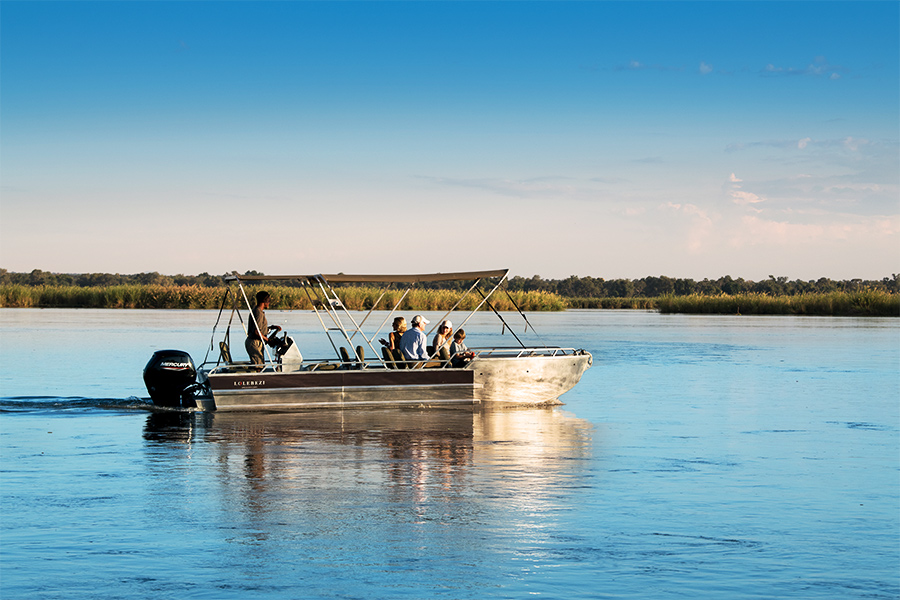
A boat ferrying guests to their lodge in style / Image: African Bush Camps

Though summer’s heat and heavy rainfall make travel more challenging, it’s not without its rewards. For starters, rates fall dramatically, meaning you’ll enjoy access to one of Africa’s best overlooked safari destinations for a fraction of the high-season cost. This is also the best time for birding, with summer migrants arriving to set the forest alive with birdsong.
“The Lower Zambezi has roughly 400 species of birds, so it almost doesn’t matter what time of year you come in, but summer really is the best. Then the migrants make it a birdwatcher’s paradise,” says Siabunkululu.
Really, though, it’s a paradise all year round. And with direct flights from Lusaka – Zambia’s capital – to the park taking just 40 minutes, it’s a paradise within easy reach for travellers. Whether it’s your first safari or one of many, you’ll soon fall in love with this unsung corner of the continent.